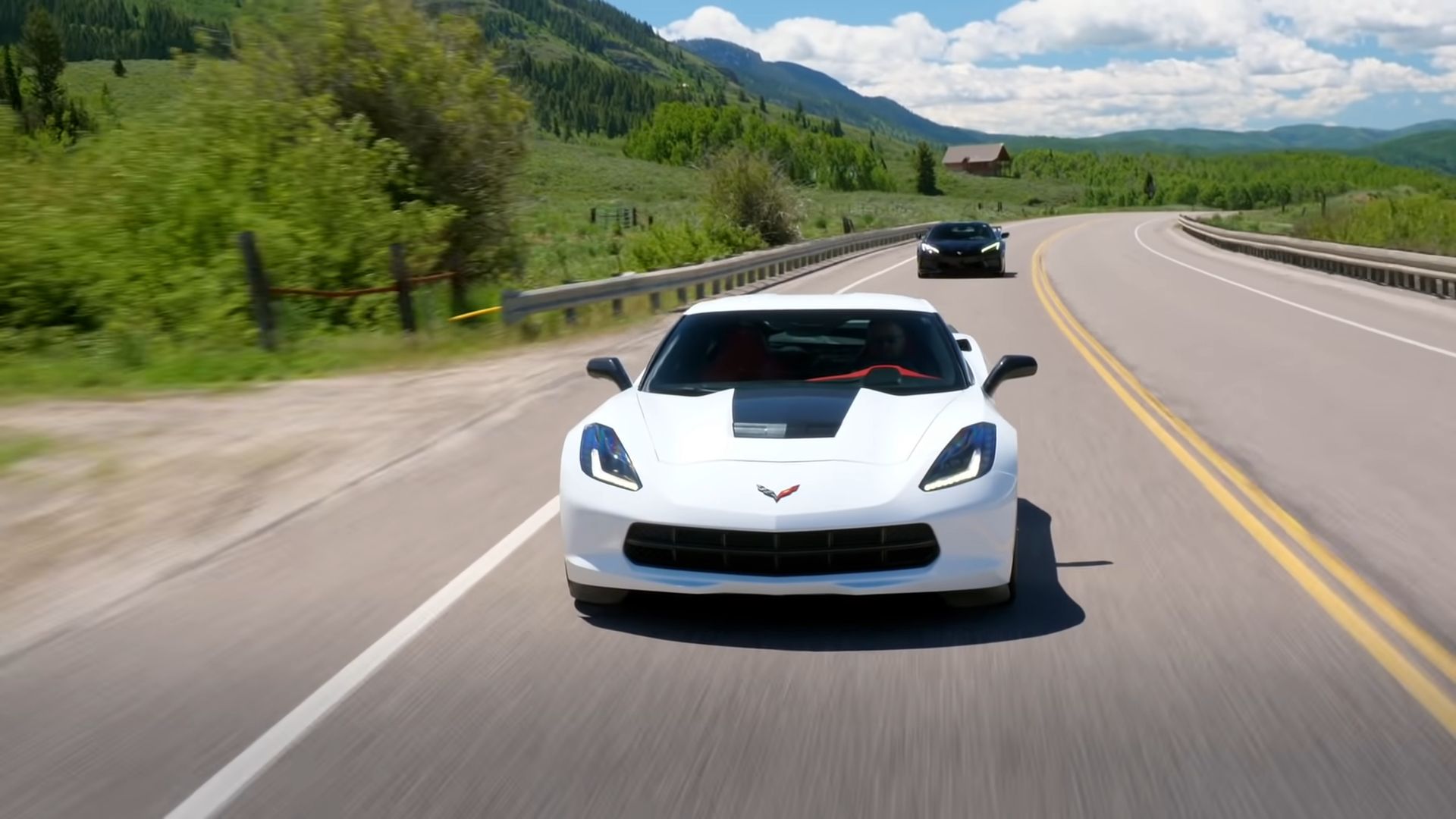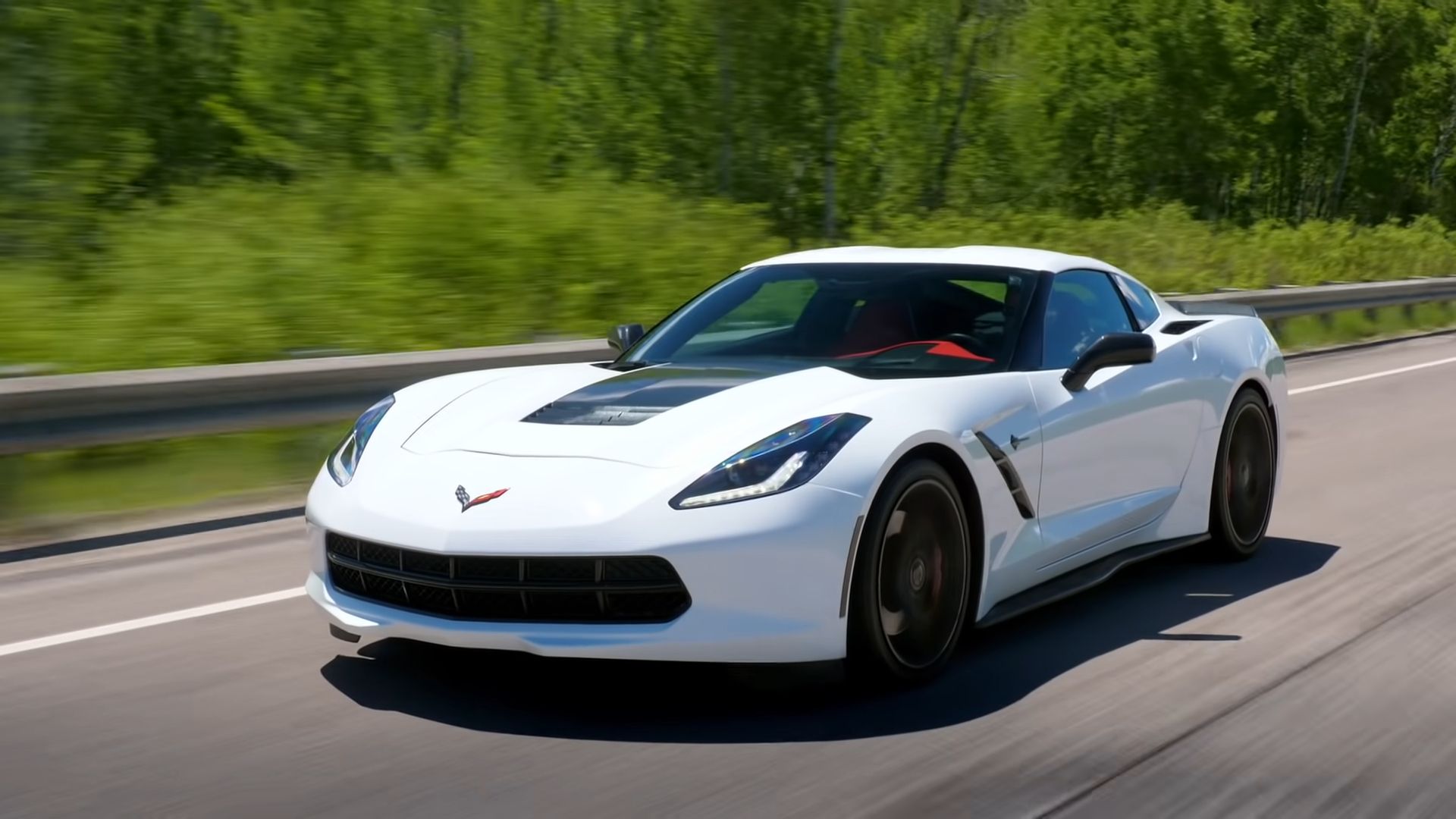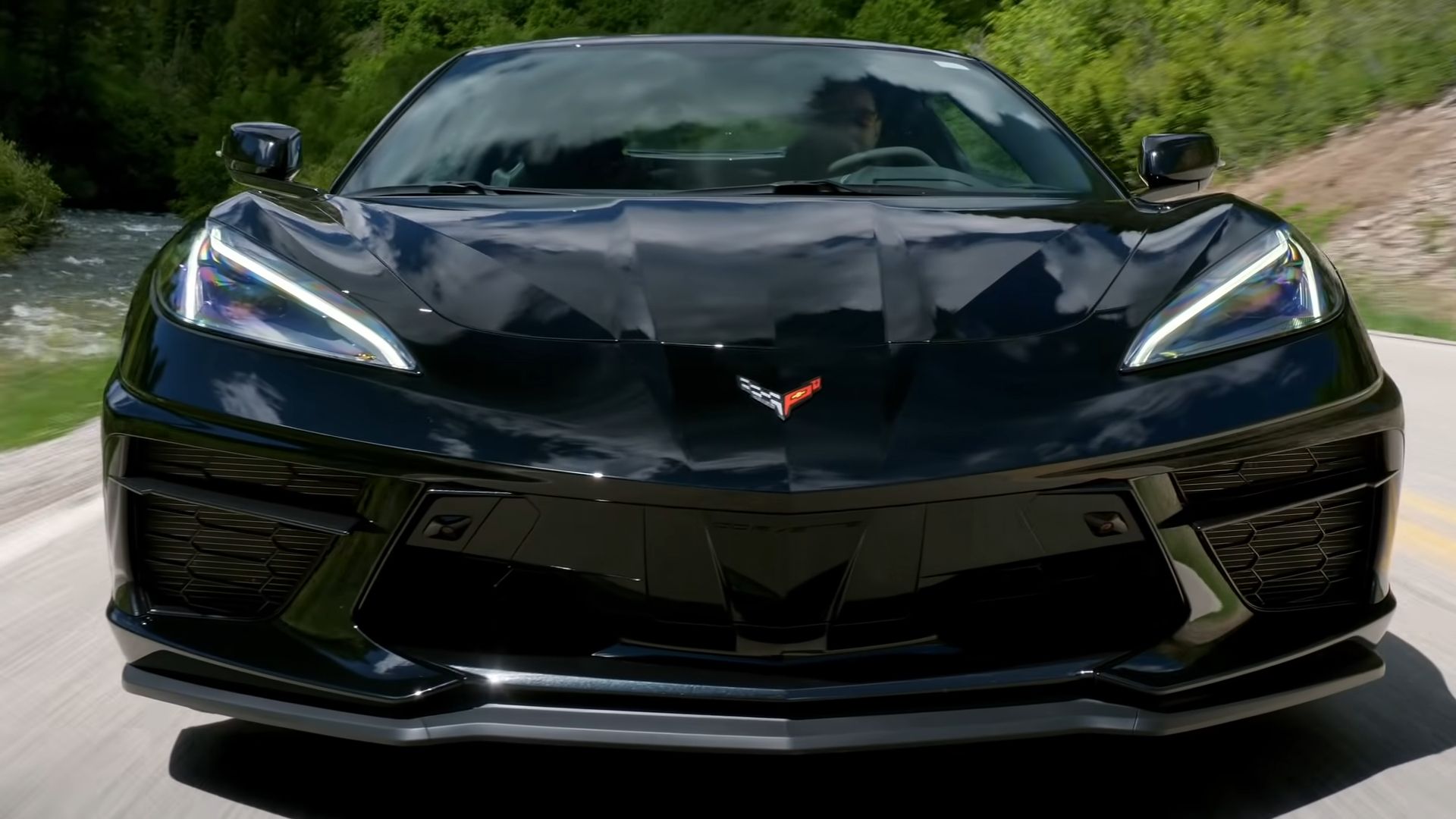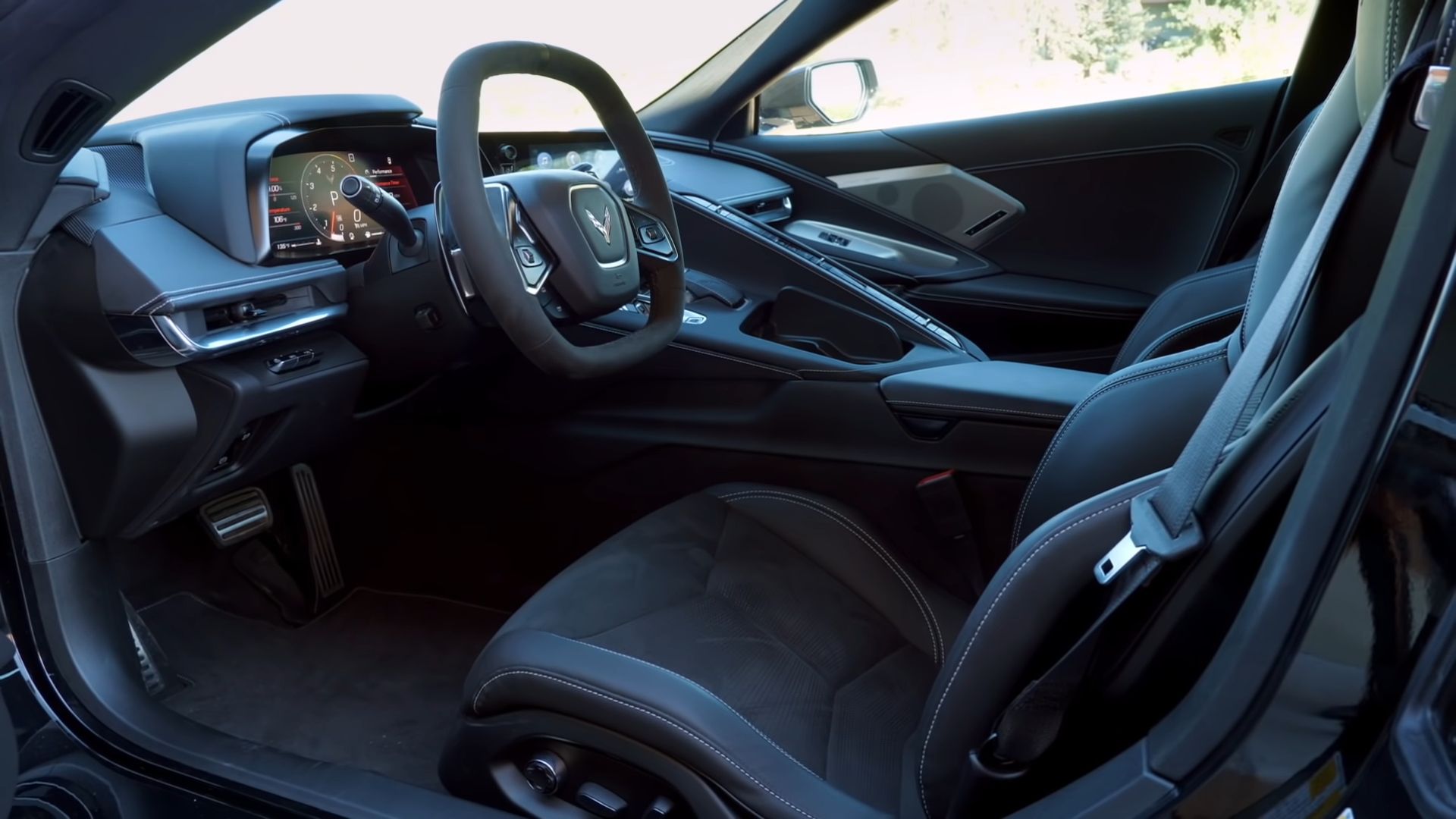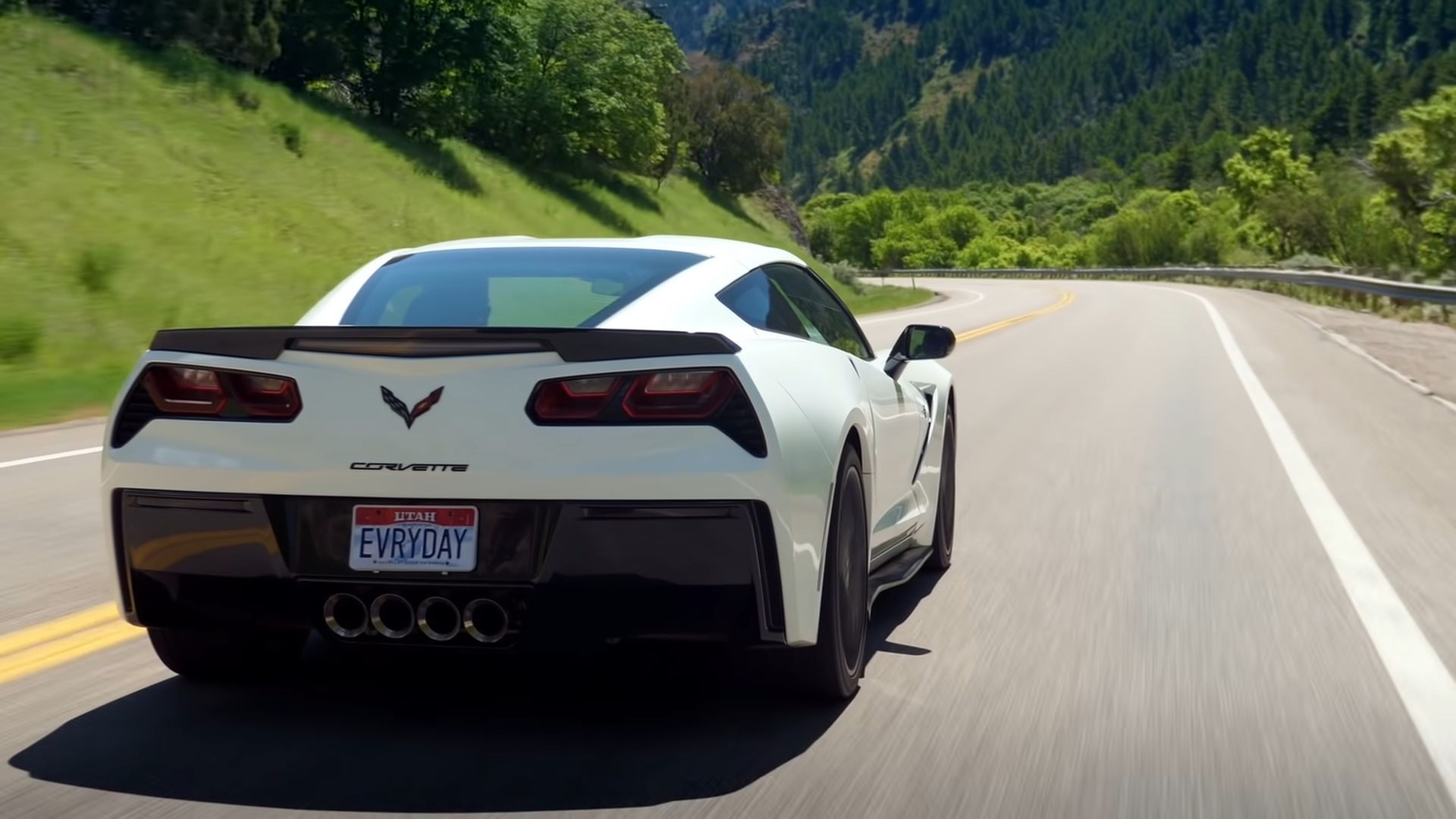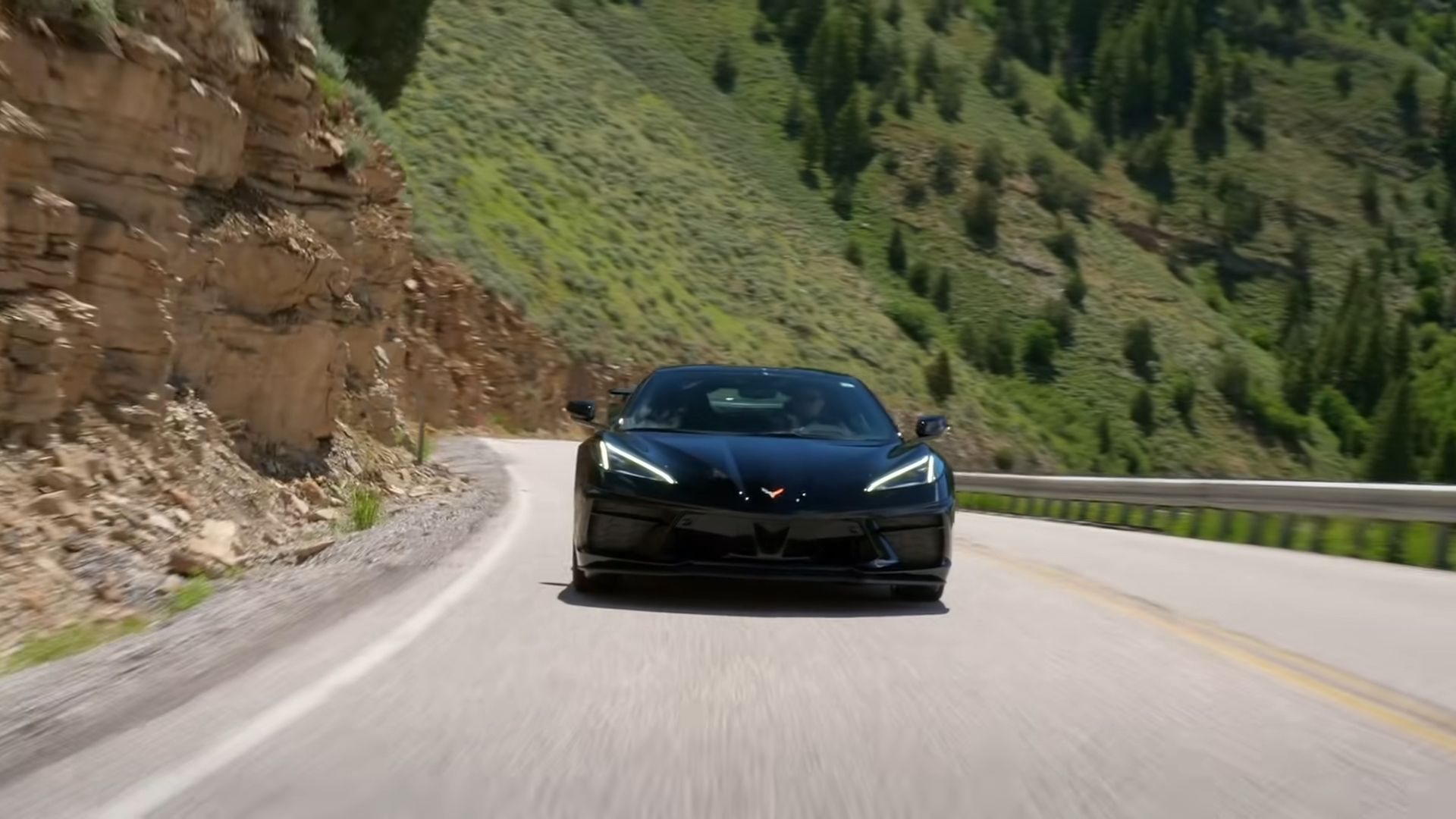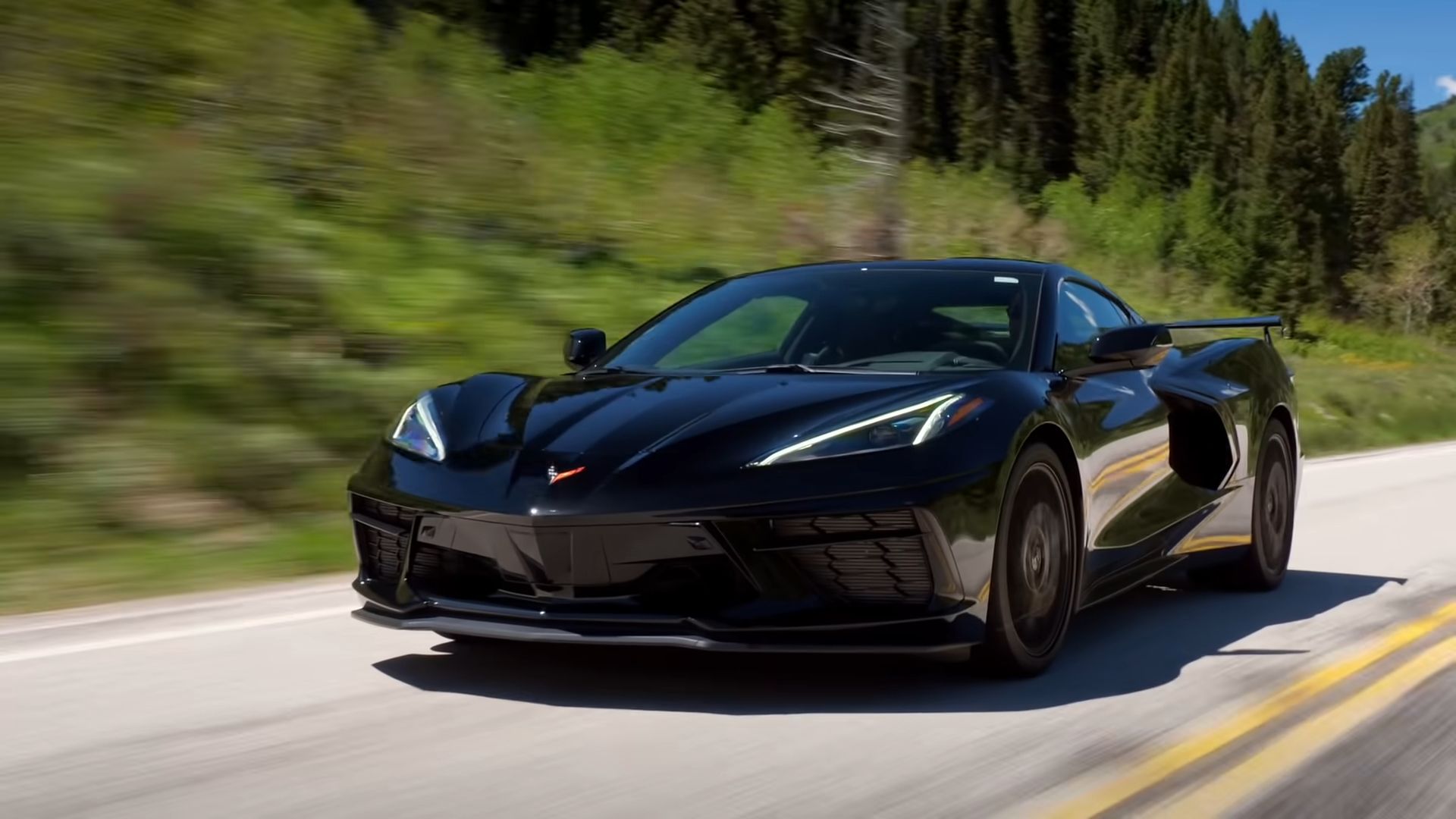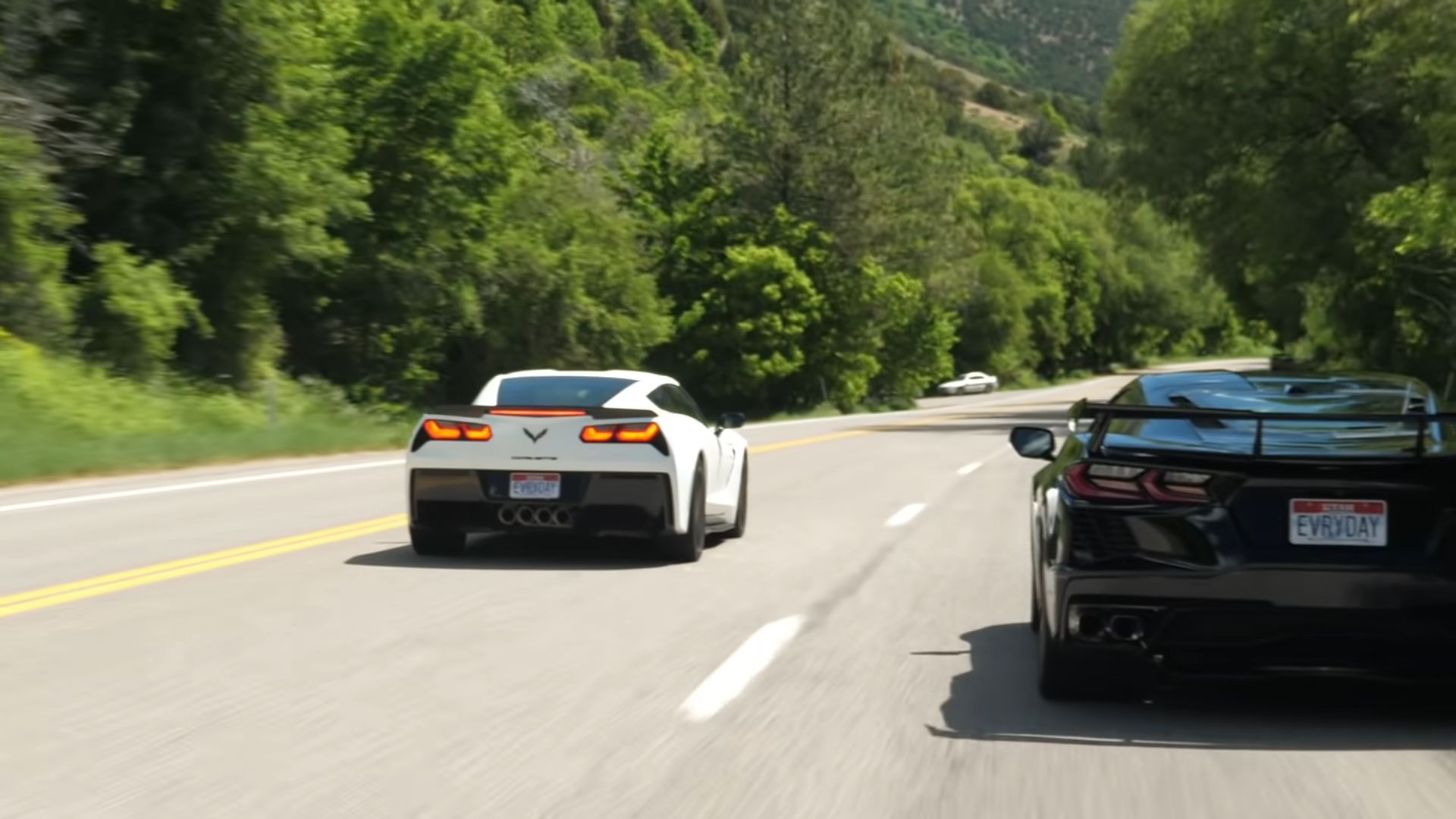There have been over a dozen concepts for a mid-engine Chevrolet Corvette over the years. Fast-forward 42 years and we finally have the first production, mid-engine Corvette – the C8. But just because the Corvette has evolved, doesn’t mean we should neglect the bargain that is the C7 Corvette, as our colleagues from EverydayDriver help us explain, in a comparison review.
The aim of the comparison test is to see how exactly the Corvette has changed, in terms of feel. Paul Schmucker, co-host of EverydayDriver, greets us from a 2014 Chevrolet Corvette C7, which is equipped with an automatic. This being an early C7, it has a six-speed automatic instead of the eight-speed dual-clutch unit. Since the C8 Corvette does not have the option of a manual, bringing an automatic C7 actually makes sense. Moreover, Todd Deeken points out that, back in 1953, the C1 Corvette came with a two-speed automatic, so historically “the Corvette and the automatic have always been married”.
How do the C7 and C8 Corvette stack up in terms of styling?
The biggest difference is obviously, the proportions. The C7 is the last front-engine Corvette and therefore features the classic long-bonnet, short-rear deck design. The decision to turn away from the round taillights is a bold one, but it works great for the C7, even if it's a bit too similar to the Camaro.
This particular C7 Corvette, featured here, features the 3LT and Z51 packages, which is “as much as you can do to a C7, without going to a Z06 or a ZR1”. One of the C7’s highlights is the interior. The C7 is the first Corvette in which the interior makes it feel like the car is worth the asking price. Paul mentions some build-quality issues, such as uneven gaps, which most people wrote off as “being a Chevy”. However, the same would not fly with the C8, which is much more comparable to European, mid-engine supercars.
As for the C8, it’s said to have been inspired by aircraft, just as the C2 Stingray. But whereas the C2 has been inspired by WW2 aircraft, the C8 looks more towards modern fighters like the F-22 Raptor or F-35. Paul notes that the claw on the side does not go well with any color. Luckily, this C8 is all black and looks great in it. F-22 Raptor? More like F-117 Nighthawk.
The C8 is a stunning car to look at, but has one design element that follows function over form – the rear end. Todd, for once, is not fond of it, as it’s “far too Camaro”. We can see what he means, but there’s also a practical reason as for why it’s so square, compared to the rest of the car – luggage space. Despite being mid-engine, the C8 Corvette needs to have enough space for a set of golf clubs.
This particular C8 has the 2LT package, which means no exposed carbon-fiber bits. That said, it still has the GT2 seats, which provide great support while being comfortable. As it is, the C8 cost its owner $81,000.
As epic as the C8 looks on the outside, the interior is something to behold. If the C7 interior is driver-centric, the one in the C8 is all about the driver. The infotainment screen is twisted towards the driver and you can almost operate it without moving your hand off the steering wheel.
The center console separates the driver from the passenger and wraps around the driver like a fighter jet cockpit. Paul mentions how he was concerned about the build quality, which is understandable, looking at some of the older Corvette generations. However, “it’s as good as any car you buy. It feels tight and solid”, though you have to be careful how you set up your seat if you are on the taller side since you can hit your head on the cross-beam when stepping on the throttle.
The C8 is plagued by the typical, for a mid-engine car, blind spots. However, the rear-view mirror actually doubles as a camera, which utilizes a periscope over the rear window.
How different are the C7 and C8 Corvette in terms of performance?
The Chevrolet Corvette C7 is powered by a 6.2-liter LT-1 V-8 engine. The all-aluminum pushrod packs 455 horsepower (339 kilowatts) at 6,000 RPM and 460 pound-feet (620 Nm) at 4,600 RPM. This being an earlier C7, the 0-60 mph (97 km/h) sprint takes 4.2 seconds, (3.9 seconds in later C7s) while the top speed is 190 mph (306 km/h). The curb weight is 3,477 pounds (1,577 kg) for early, automatic-equipped cars.
The C8 Corvette comes with a 6.2-liter LT-2 V-8, which is actually an evolution of the C7’s LT-1. It’s still a pushrod, but is more rev-happy, making 495 horsepower (369 kilowatts) at 6,450 RPM and 470 pound-feet (637 Nm) at 5,150 RPM. The C8 is still rear-wheel-drive-only, but due to the rear-mid-engine setup, it has better rear-end traction. This allows for a 0-60 mph (97 km/h) sprint in 2.9 seconds. The top speed is 194 mph (312 km/h). The C8 is also lighter, with a curb weight of 3,366 pounds (1,527 kg).
The gearbox in the C8 is much more intuitive, especially compared to the six-speed automatic in earlier C7 Corvettes. In addition to the obvious difference in shift times, the C8’s DCT unit is also much more intuitive, making it easier to live with on a daily basis. Todd also notes that, while most DCT units are somewhat inadequate at slow-speed driving, the one in the C8 is quite refined. All of a sudden, it becomes harder to justify a C7 that’s equipped with an automatic.
How do the C7 and C8 Corvette handle?
The C7 Corvette has a more traditional feel. That said, it doesn’t feel old, just familiar. It’s worth noting that the C7 is a front-mid-engine, which means most of the engine is behind the front axle. The car actually feels lighter and nimbler as you go faster. “When a car gets smaller around you and starts to act more nimble than the numbers should suggest, that’s when it gets really great”, Paul explains.
With the C8 Corvette, you are “one with the road”, “a part of the driving experience”, more than in any other Corvette. According to Todd, Chevy (finally) went mid-engine because there really wasn’t more performance to be squeezed out of the front-engine, rear-wheel-drive platform. More weight at the rear axle translates into a more planted rear end and therefore more traction. Otherwise, they would have had to go all-wheel drive.
Paul mentions the center aluminum structure of the C8, which allows it to be exceptionally rigid, regardless of whether it’s a fixed-roof coupe or a convertible. This C8 also has the Z51 package, which adds a more aggressive aero and a rear wing, among other things. That said, it also has the track package, which removes the front axle lift.
A tribute to Zora Duntov
A neat detail about the C8 is the subtle homage to Zora Arkus-Duntov – the father of the Corvette. He wanted the “Vette” to be mid-engine from day one and it finally happened. There is a “Z” button on the steering wheel, which is for a customized driving mode, which “allows you to turn the Corvette in whatever you want it to be”. With that said, even the mid-engine Corvette can be a good boulevard cruiser when you want it to be, just like other Corvettes before it.
Conclusion
In the end, comparing the C7 and the C8 is like comparing apples to oranges. Because of their drivetrain layout, they are two very different takes on the Corvette. The C7 is, obviously, the more traditional car and harkens back to early Corvettes. That said, it’s a properly sorted car and really, the pinnacle of front-engine Corvettes. GM has been perfecting the front-engine, rear-wheel-drive layout for seven generations and the C7 is the embodiment of that perfection. Moreover, a C7 will currently cost you half the price of a C8, without being half the sports car.
The C8, on the other hand, shows why the Corvette had no choice, but to go mid-engine. All of a sudden, the performance potential has been increased exponentially. To summarize the C8, has an exotic car element to it, without having the price tag of one. In fact, both hosts agree that the C8 can easily be compared with European, mid-engine exotics. It’s that good!


